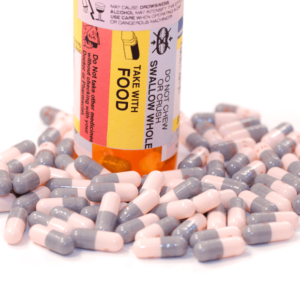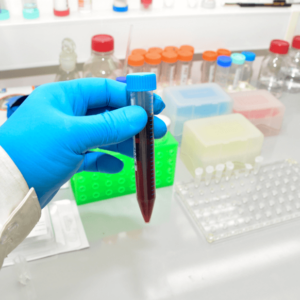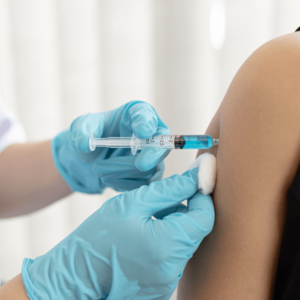Every medication you take or medical device you use, from over-the-counter pain relievers to prescription medications, were once the subject of a clinical research study to help determine its effectiveness and potential side effects. These studies are incredibly important in advancing knowledge and finding new treatments for acute and chronic conditions alike.

That said, we understand that the prospect of participating in a clinical research study might leave you feeling a bit uneasy. You read that participants of XYZ study are receiving a payout of $20,000 and think, “Well, they must be putting their bodies through the wringer.”
Higher Paying Clinical Research Studies Don’t Mean Higher Risk
It’s very natural to correlate higher risk with a higher payout, but in actuality, the payout has little to do with the risk involved and focuses more on the time and physical tasks being made of participants.
If we’re asking participants to give up days, even weeks of their time, to have their blood drawn and analyzed multiple times, odds are that clinical research study will come with a large payout. While we can’t make broad promises that no one will have an adverse reaction, the vast majority of participants experience rather routine side effects.
What’s a routine side effect? Pretty much the standard range of acute side effects. Nausea, headache, or lightheadedness.
Benefits of Clinical Research Studies
There are many reasons that people may elect to enroll in a clinical research study. QPS in Springfield, Missouri is a Phase 1 research facility. That means that we observe the way the body handles the investigational drugs/devices, the side effects, and the dose range. This is accomplished through frequent blood draws during the study to check the drug levels in blood plasma.

Unlike later phase clinical research studies, Phase 1 studies typically do not offer any health benefits to the participants, which is why participants are compensated for their time and effort.
Phase 1 clinical research studies are incredibly important in the advancement of certain medications and treatments. Once the safety and dosage of each investigational drug/device have been evaluated, Phase 2 determines if the drug improves certain diseases, and at what doses and frequency.
Following Phase 2, the drug is administered to participants with a condition for which the drug is intended. Phase 3 is where you hear about cancer patients enrolling in an efficacy study once mainstream treatment options have failed.
The benefit of all of these is the thorough testing of new drugs/devices that have the potential to save or improve thousands of people’s lives. As the focus becomes narrower, the participants become more targeted to those for whom the drug is intended, and sometimes to life-saving results.
Are Paid Clinical Research Studies Safe?
All the investigational drugs/devices tested in a clinical research study have already been thoroughly evaluated. This is true across the board, even in early-phase studies like those conducted at QPS. If the investigational drugs/devices are proven to be unsafe during in-vivo (live animal) testing, they will not advance to human studies, as they will have already failed in the ultimate goal of improving and saving lives.
We’ve discussed this elsewhere, but it is important to note that not all participants will experience side effects in a clinical research study. However, when experienced, all side effects are closely monitored and treated per the trials protocol guidelines, and participants may leave the study at any time if they become uncomfortable with the side effects or for any other reason.

A vast amount of clinical research studies have a placebo or control group; that is, a selection of individuals who are participating in the study but not receiving the drug being tested. They instead receive an intervention that looks similar but has no therapeutic effect. It is not uncommon for participants in a placebo/control group to experience adverse events which can arise from any number of environmental or other factors, including psychological symptoms sometimes called “The Placebo Effect” where participants experience symptoms they think are from a drug, even when they are not getting the drug. These control group adverse events are important to document as they have a role to play as well, as we compare the effects certain investigational drugs/devices have on people who are comparable in age and health history.
Regardless, if you do experience side effects from the clinical research study, you will be monitored and treated per the trials protocol guidelines; and the option is always open to withdraw from the clinical research study should the side effects interfere with your well-being.
Again, it’s important to emphasize that the payout associated with a clinical research study is not a reliable indicator of how invasive the study will be. Some clinical research studies are outpatient, meaning the participants simply stop by on predetermined days for treatment or follow-up. Others are intensely time-consuming and require participants to remain on our Springfield Missouri campus for days or weeks at a time. The compensation is related to what we’re asking our participants to give us insofar as time and access to continued bloodwork for analysis.
Insofar as side effects, every human body is different. We all have our own threshold for tolerable and intolerable levels of discomfort. Standard side effects like nausea, lightheadedness, and headaches may be tolerable for some and complete deal-breakers for others. All potential participants will be enrolled in clinical research studies through an Informed Consent, which provides the information needed to make the decision to participate.
If you’re curious about participating in one of our clinical research studies, don’t hesitate to reach out or sign up. Submitting an application does not obligate you to anything—if you are selected and, upon learning more about the study, decide you would rather not participate, that’s perfectly fine! The comfort of all our participants is something we do not take lightly.
